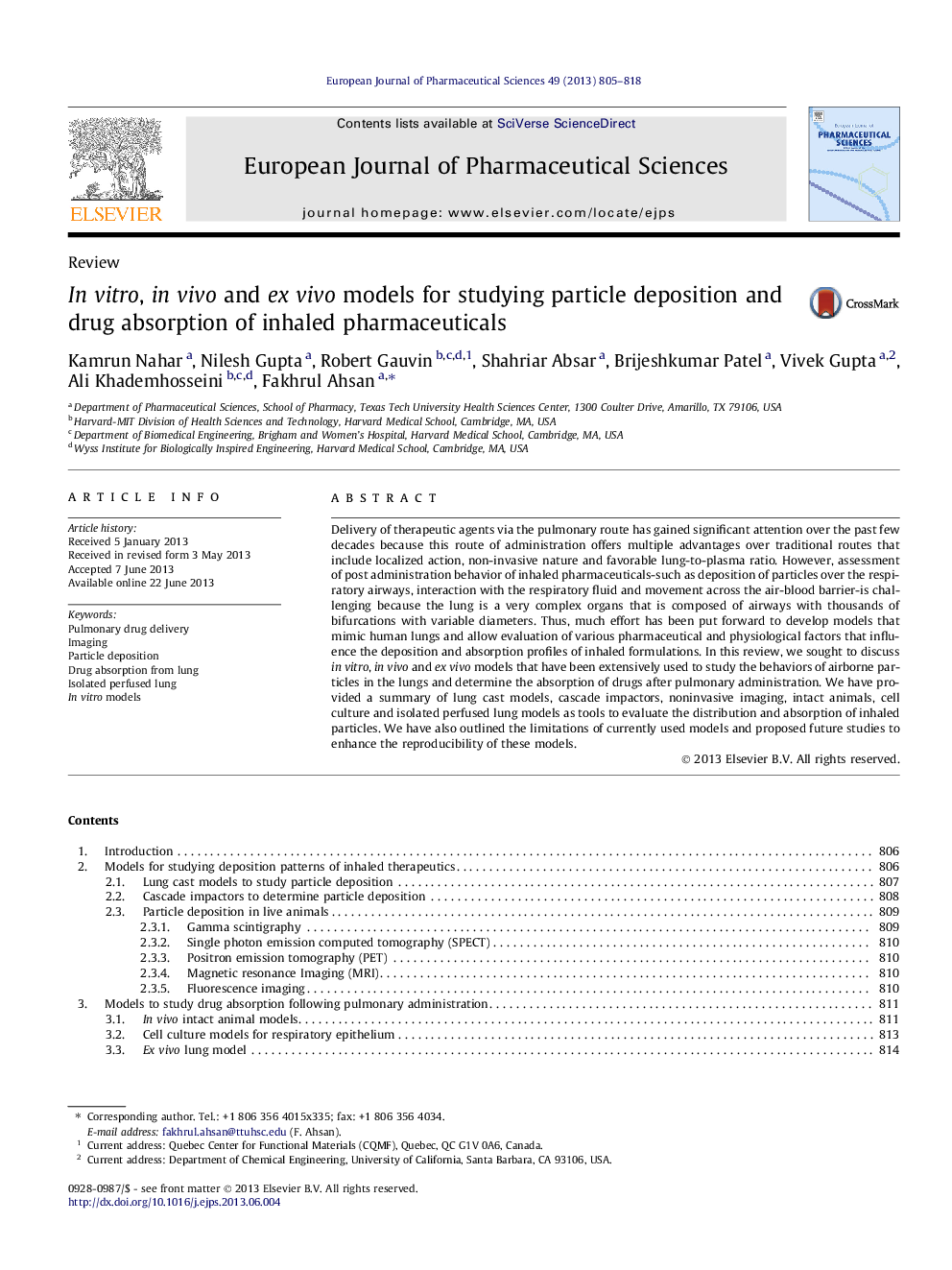| Article ID | Journal | Published Year | Pages | File Type |
|---|---|---|---|---|
| 2480745 | European Journal of Pharmaceutical Sciences | 2013 | 14 Pages |
Delivery of therapeutic agents via the pulmonary route has gained significant attention over the past few decades because this route of administration offers multiple advantages over traditional routes that include localized action, non-invasive nature and favorable lung-to-plasma ratio. However, assessment of post administration behavior of inhaled pharmaceuticals-such as deposition of particles over the respiratory airways, interaction with the respiratory fluid and movement across the air-blood barrier-is challenging because the lung is a very complex organs that is composed of airways with thousands of bifurcations with variable diameters. Thus, much effort has been put forward to develop models that mimic human lungs and allow evaluation of various pharmaceutical and physiological factors that influence the deposition and absorption profiles of inhaled formulations. In this review, we sought to discuss in vitro, in vivo and ex vivo models that have been extensively used to study the behaviors of airborne particles in the lungs and determine the absorption of drugs after pulmonary administration. We have provided a summary of lung cast models, cascade impactors, noninvasive imaging, intact animals, cell culture and isolated perfused lung models as tools to evaluate the distribution and absorption of inhaled particles. We have also outlined the limitations of currently used models and proposed future studies to enhance the reproducibility of these models.
Graphical abstractFigure optionsDownload full-size imageDownload high-quality image (251 K)Download as PowerPoint slide
